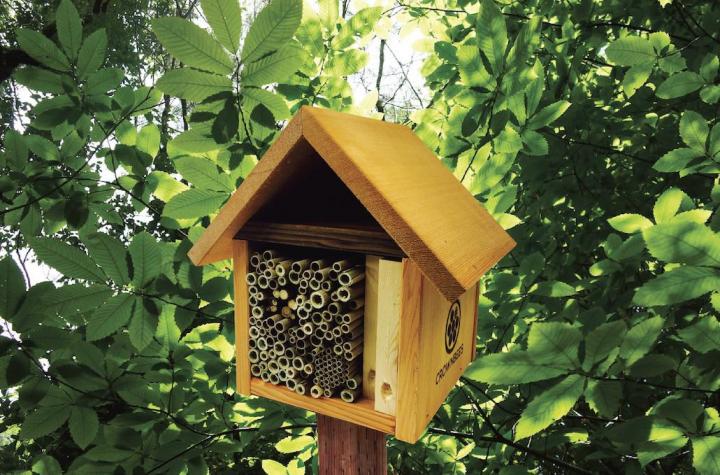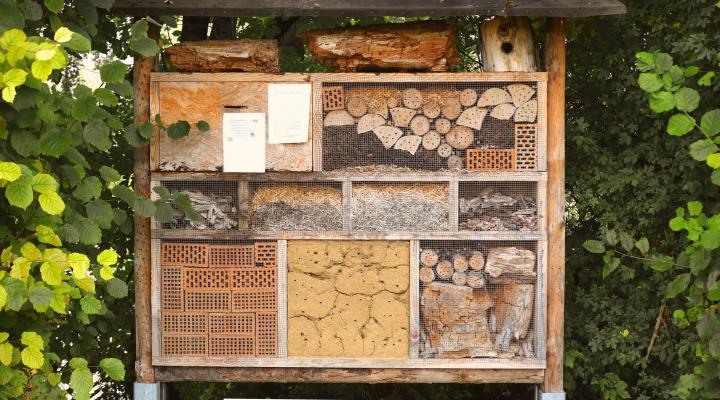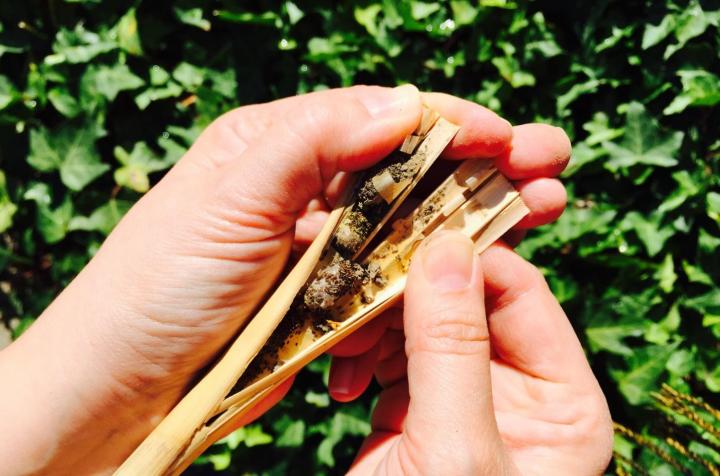
Bee houses are an easy and eye-catching way to attract native bee species to your garden.
Get Better Flowers, Fruits, and Vegetables with a Native Bee Hotel!
The Almanac Garden Planner - Use It Free for 7 Days!
Plan your 2025 garden with our award-winning Garden Planner.
ADVERTISEMENT
One of the better written articles on Native Solitary Bees. Well done!
When you remove the cocoons, where do you put them???
I’d really love to put a bee house up in my garden, but don't have a garage or shed. Could they be wintered over underneath a porch (sides mostly blocked off) or under mulch/straw in the same way you winter-over plants? Thanks
Charlotte, when we moved into a log home we noticed that the tiny, long spaces between logs had little bees coming & going in the spring; I was to learn these were mason bees. They'd long ago adapted to using the house for egg-laying & hatching. They were surviving the natural way, in droves! When we had to add siding & insulation over the logs to keep our house warm, I started with bee boxes with "shelves", the kind you unscrew the shelves to release the bees, which I continue to use now. I don't bring them in, just leave them out all winter, but do clean the "runways" once they've hatched to clear out any mites. Every few years I start over with new wooden shelves, but keep the bee box. My point is it doesn't have to be complicated with removing cocoons, etc. I lose some to mites, but most hatch in April.
As long as it is kept in a sheltered area (such as under the porch), I think it would be worth trying to overwinter the bees. However, in that location they could be vulnerable to things like squirrels and mice, so consider keeping them in a secure container (that also lets some air in).
The bee tubes look like they are the same size as cinnamon sticks. Would it hurt to place one cinnamon stick in place of a bee tube? Would the cinnamon stick detract bees from the house, or could it change the flavor of honey?
These bees do not produce honey. These are solitary bees that do not live in a colony like honey bees.
That’s a very interesting idea! Cinnamon is naturally anti-fungal, which would be beneficial to the bees. However, most insects dislike the strong scent of cinnamon and will avoid it; bees would likely do the same!
Cinnamon sticks are usually quite a bit smaller than the hole sizes needed for Solitary bees to nest and thrive in.
I was wondering why I have bees hanging on my flowers in the evening and they are still there the next morning. In my search, I found that male bees don't have a home and this is where they 'hang' for the night. Do you know if these homeless male bees utilize the bee houses? I always feel bad for them as they are there in the cold, hail, rain, etc.
They seem to like my oregano flowers and I don't have many but this seems to be their home for quite a few bees.
Thanks kindly!













